Friday, June 29, 2007
DEFENSE & FOREIGN AFFAIRS - Special Analysis - JUNE 30TH
Volume XXV, No. 52 Saturday, June 30, 2007
Special Report
Iran, Syria Make Strenuous Preparations for Combat-Readiness, Partly Reflecting Major Internal Leadership Schisms
Analysis. By Gregory R. Copley, Editor. GIS.
A pattern of Iranian and Syrian cooperation is emerging which indicates intensive preparations for imminent hostilities, even in the face of — and perhaps even because of — growing public unrest within their societies.
The June 26-27, 2007, gasoline rationing riots which struck Tehran and other major Iranian cities were perceived by Western media analysts to highlight the weakness of the Iranian clerical Government of Pres. Mahmud Ahmadi-Nejad.
In fact, more detailed intelligence shows that the clerical leadership not only anticipated the Iranian public unrest over petroleum rationing; that it had adequate reserves of refined petroleum and chose not only not to release these reserves to the public but rather to further ration normal supply; and then to deal strenuously and confidently with the protestors.
The Iranian Government has, in recent weeks and months, been acquiring refined petroleum on the international market at an unprecedented rate, and has paid cash for the oil, rather than its traditional approach of offering crude oil in barter for refined oil.
The Associated Press said on June 27, 2007, that “[t]he rationing is part of a Government attempt to reduce the $10-billion it spends each year to import fuel that is then sold to Iranian drivers at less than cost, to keep prices low.”
Intelligence sources, however, indicate that this is not so: the Iranian Government has been increasing its spending on refined petroleum imports, particularly in recent months, but has been stockpiling the fuel for military use. Indeed, the fuel rationing now seems to be part of the process of ensuring that adequate stocks of refined petroleum are available for military purposes.
The Iranian Government moves on stockpiling refined petroleum products parallel a variety of other indicators which show that Tehran is preparing for a worsening of the current international embargoes against the country to the point of war.
It is also working extensively to overcome the international embargo on the provision of weapons to Iran through major deals being conducted via Syria, and pushing Syria itself — Iran’s principal regional ally, or surrogate — into preparation for conflict as well.
Significantly, however, rifts in the Syrian leadership structure are also cause for concern in Tehran, but may, in fact, be contributory to the Syrian-Iranian preparations for external conflict as a means of bolstering support for the respective governments by their communities.
Quite apart from the divisions in the Iranian leadership (discussed below), and the division between the clerical ruling élite and the population itself, Syria’s Bashar al-Assad leadership ‘Alawite leadership group is itself becoming divided and rudderless in some respects, and is also facing a need to galvanize its population around a common cause.
There seems to be a major breakdown within the ruling elements of the Assad family in Damascus. Essentially, the President, Dr Bashar al-Assad, and his brother-in-law, Assaf Shawqat, the Director of Military Intelligence, were, according to highly-placed sources, inclined to spark the region in order to “rally the troops behind the flag”. This accords with Tehran’s need to develop a united front to simultaneously confront the US and Israel.
Significantly, however, even if Bashar was not inclined to work in concert with Tehran, his leadership is to a substantial extent predicted upon Tehran’s ability to blackmail the ‘Alawite leadership over the “legitimacy” of the ‘Alawites as a Shia sect.
The April 1973 fatwa issued by the late (officially only “missing”) Imam Mussa Sadr certifying the ‘Alawites as Ja'afari Shi’ites. Because Sadr “disappeared” (killed by Libyan intelligence officers on the orders of Libyan leader Mu’ammar al-Qadhafi), no replacement could be nominated (because of the Shi’ite obsession with occultation) and his legal archive was moved to the High Court in Qom, Iran.
Hence, the certification of the ‘Alawites as Muslims is now beholden to the goodwill of the mullahs in Tehran, making the Assads of Damascus effectively hostages to this goodwill. Thus, talk in Washington about convincing Damascus to de-link from Tehran is wishful thinking.
Moreover, the Bashar al-Assad Government is facing the increasing effectiveness and appeal of the leadership of the exiled uncle of the President, Rifaat al-Assad, who is seen as perhaps the only ‘Alawite leader who could have the strength to govern Syria without Iranian support, and even without the blessing and affirmation of the Shia leadership in Qom. He is, in other words, a national Syrian leader in his own right.
But in order for the existing Syrian and Iranian leadership attempts to bolster and protect their rule against internal opposition, by promoting the idea of international threats to the countries, both Damascus and Tehran are building defense readiness.
From June 18-21, 2007, Syrianair cancelled most of its scheduled air services and diverted aircraft into an airlift of weapons from Tehran to Damascus, with some of those weapons shipments going on to HizbAllah in Lebanon.
As well, Iran Air and, reportedly, Islamic Republic of Iran Air Force (IRIAF) aircraft were pressed into service to airlift military supplies from Tehran to Damascus (again, with some shipments moved by surface transport on to Lebanon for HizbAllah).
At the same time, Syria reportedly took delivery in June 2007 of five MiG-31E advanced combat aircraft, and may have already begun accepting delivery of further MiG-29 variants — reportedly MiG-29M/M2s — for possible on-shipment to the IRIAF. The IIRAF already had some 25 Mikoyan MiG-29 and 15 two-seat MiG-29UB Fulcrum fighters in its inventory.
The Syrian Air Force (Al Quwwat al Jawwiya al Arabiya as Souriya) had appr. 42 MiG-29A Fulcrum fighters, 14 MiG-29SMT Fulcrum air defense and air superiority aircraft, and six Mikoyan MiG-29UB Fulcrum operational trainers in its inventory. The MiG-31 is a development of the MiG-25 series, and it is reported that the MiG-29M/M2 is, in fact, similar in its subsystems and capabilities to the model being offered as the MiG-35 for the Indian Air Force.
It is probable that Russia took back some of Syria’s older MiG-25 Foxbat high-altitude reconnaissance aircraft as trade-ins for the MiG-31Es.
The MiG-31E is the export version of basic MiG-31 prototype (“903”), which was first noted in 1997; it has simplified systems over the MiG-35, with no active jammer, downgraded IFF, as well as downgraded radar and DASS. The Syrian Air Force has less than 15 Mikoyan MiG-25PD Foxbat air defense aircraft in its inventory; eight Mikoyan MiG-25RB reconnaissance; and two MiG-25RU Foxbat operational trainers.
It is possible that Tehran and Damascus have been awaiting delivery of the advanced models of the MiG-25 and MiG-29 series before declaring readiness for a major, coordinated upsurge in confrontation with the US and Israel. Certainly, Syrian and Iranian aircrew and technicians have been undergoing training in Russia on the new systems.
The use of Syria as a front for the purchase of advanced systems for Iran is not new. Even as recently as April-May 2007, it was reported that some of Syria’s 36 new Pantsir-S1E air defense systems were on-shipped to Iran.
Meanwhile, it will be of key importance to note when the DPRK (North Korea) also begins steps to upgrade its confrontation, or return to a confrontational mode, with the US. This would indicate that the alliance of Iran, Syria, and the DPRK is ready to make moves, with the DPRK providing strategic diversion to an escalation in the Middle East.
At the same time, however, the rifts within the clerical leadership are also coming to a head. There is a significant movement by former Pres. Ali Akbar Hashemi-Rafsanjani, who has found common cause with the “Supreme Leader”, “Ayatollah” Ali Hosseini-Khamene‘i, to attempt to work against Pres. Ahmadi-Nejad, who Rafsanjani is convinced is moving Iran too close to an unwinnable war with the US.
Some Tehran sources indicate that Rafsanjani has already hinted to Saudi and US officials that he would, if he and Khamene‘i could remove Ahmadi-Nejad, begin a rapprochement with the US.
This kind of leakage could, however, also be designed to cause the US to pull back from military confrontation with Iran, given the predilection in the US State Department to follow the recommendations of former Secretary of State James Baker to “normalize” US-Iranian relations, regardless of the fact that this would work against US long-term interests by perpetuating a radical clerical Administration in office in Iran.
As one Tehran source said: “These so-called ayatollahs may all hate each other and scheme against each other, but the ‘reformers’ are now different from the hard-liners when it comes to power issues; they are both the same side of the same coin. The ‘reformers’ only allow women to have a less strict dress code, and may — as Rafsanjani is hinting — make the nuclear program less visible. But they still will foment terrorist activities; they will still work to use HizbAllah to destroy Israel. They are all the same.”
London Attempted Bombings Clearly Prepared by Iraq “Graduates”
From GIS Station London.
UK security officials had been reason to believe during June 2007 that a major new bombing offensive was being planned for London and were clearly prepared for the planned car-bombing campaign which was discovered overnight on June 28-29, 2007, in the London West End. The two vehicles were identified initially through the extensive video surveillance network in the capital, and police were despatched to investigate the two suspicious parked Mercedes Benz vehicles. One person, a “delivery boy”, was caught on tape.
The car bombs were to have been command detonated through a cellphone linkage, but UK authorities had not, by late June 29, 2007, discounted the possibility of suicide bombers being used to ensure successful detonation.
But more significantly, GIS analysts have confirmed that the vehicle bombs bore all the hallmarks of the current phase of Iraq vehicle bombs. Some media reporting has indicated that the planned bombings had “all the hallmarks of an al-Qaida operation”, but specifically they had the hallmarks of the current Iraqi bombmakers.
UK sources indicated that the early detection of the vehicles was in part attributable to the linkage of the extensive UK video surveillance system into a complex computer analytical system which helps highlight potential threats.
UK and Islamist sources dismiss suggestions that the planned attacks were designed specifically to test the incoming Government of Gordon Brown; they had been in the works for some time as a part of the overall and ongoing jihadist campaign.
Iran’s Rôle Has Always Been a Key Element in the “Blended” Islamist Jihadism Which Now is Operational in Britain.
New UK Cabinet Keeps Browne in Defence
Incoming United Kingdom Prime Minister Gordon Brown retained Des Browne as Secretary of State for Defence when the new Ministry was announced on June 28, 2007.
Prime Minister Tony Blair stepped down as Prime Minister on June 27, 2007, which allowed then-Chancellor of the Exchequer Gordon Brown to take office as Prime Minister. Prime Minister Gordon Brown announced a new cabinet to take office on June 28, 2007 as his first order of business, bringing 14 new members into various ministerial posts, while placing 13 of the outgoing Government’s ministers into new posts.
Eleven cabinet members were dismissed, demoted, or resigned in the ministerial re-shuffle. One of the major changes to the cabinet PM Brown was David Miliband, who became the youngest Secretary of State for Foreign & Commonwealth Affairs in modern times, at age 41. The new UK Cabinet and Ministry is as follows:
Prime Minister, First Lord of the Treasury and Minister for the Civil Service: Brown, Gordon, Dr
Chancellor of the Exchequer: Darling, Alistair
Secretary of State for Defence and Secretary of State for Scotland: Browne, Des
Secretary of State for Foreign &Commonwealth Affairs: Miliband, David
Lord Chancellor and Secretary of State for Justice: Straw, Jack
Secretary of State for Business, Enterprise and Regulatory Reform: Hutton, John
Secretary of State for Children, Families and Schools: Balls, Ed
Secretary of State for Communities and Local Government: Blears, Hazel
Secretary of State for Culture, Media and Sport: Purnell, James
Secretary of State for Environment, Food and Rural Affairs: Benn, Hilary
Secretary of State for Health: Johnson, Alan
Secretary of State for the Home Office: Smith, Jacqui
Secretary of State for Innovation, Universities and Skills: Denham, John
Secretary of State for International Development: Alexander, Douglas
Secretary of State for Northern Ireland: Woodward, Shaun
Secretary of State for Transport: Kelly, Ruth
Secretary of State for Wales and Secretary of State for Work and Pension: Hain, Peter
Minister for the Cabinet Office (and Chancellor of the Duchy of Lancaster): Miliband, Ed
Minister Without Portfolio & Labour Party Chair: Harman, Harriet
Chief Secretary to the Treasury: Burnham, Andy
Parliamentary Secretary to the Treasury & Chief Whip: Hoon, Geoff
Also Attending Cabinet:
Lord Privy Seal & Leader of the House of Commons and Minister for Women: Harman, Harriet
Leader of the House of Lords & Lord President of the Council: The Baroness Ashton of Upholland
Lords Chief Whip & Captain of the Gentlemen at Arms: Lord Grocott of Telford
Attorney-General: The Baroness Scotland of Asthal
Minister for Europe: Murphy, Jim
Minister for Housing: Cooper, Yvette
Minister for Africa, Asia and UN: Brown, Mark Malloch, Sir
Minister for the Olympics and London: Jowell, Tessa
Minister for Children and Youth Justice: Hughes, Beverley
Parliamentary Private Secretaries to the Prime Minister: Austin, Ian and Smith, Angela
Governor, Bank of England: King, Mervyn
Strategic Biographies
Desmond Browne
Secretary of State for Defence and Secretary of State for Scotland of the
United Kingdom
Desmond (“Des”) Browne, who was appointed Secretary of State for Defence of the United Kingdom on May 5, 2006, was born on March 22, 1952, in Kilwinning, Scotland. He studied at the Catholic Saint Michael's Academy in Kilwinning, and then went to University of Glasgow where he received his degree in law.
Secretary of State Browne became an apprentice solicitor at the James Campbell & Company law firm in 1974; he qualified as an assistant solicitor in 1976 and later as a solicitor in 1980 at the Ross, Harper and Murphy law firm. He became a partner in the McCluskey Browne law firm in 1985 and a member of the Law Society of Scotland from 1988 until 1992. He specialized in child law cases.
Secretary of State Browne contested in the UK Parliamentary election in 1992 in the Argyll and Bute district for the Labour Party and lost (he was fourth behind Liberal Democrat MP Ray Michie). He was elected to the Faculty of Advocates for the Scottish courts in 1993. He contested in the 1997 UK Parliamentary election in the Kilmarnock and Loudoun district for the Labour party and won with 49.8 percent of the vote.
He became the Parliamentary Private Secretary (PPS) for Secretary of State for Scotland Donald Dewar in 1998 and later for Secretary of State for Scotland John Reid in 1999. He became the PPS for the Northern Ireland Office in 2000.
Prime Minister Tony Blair appointed Mr Browne Under Secretary of State for the Northern Ireland Office in 2001, and he then became the Minister of State for Department of Work and Pensions in 2003. He became the Minister for the Home Office in charge of immigration in 2004. Mr Browne joined the UK Cabinet as Chief Secretary to the Treasury under the Prime Minister Tony Blair on May 6, 2005, until May 5, 2006, when he was appointed Secretary of State for Defence. He retained this post when Chancellor of the Exchequer Gordon Brown replaced Tony Blair as Prime Minister on June 27, 2006.
Prime Minister Gordon Brown, however, then appointed Des Browne to the additional portfolio of Secretary of State for Scotland (in addition to his rôle as Secretary of State for Defence) on June 28, 2007.
Secretary of State Browne is married to Maura Taylor; they have two sons.
David Miliband
Secretary of State for Foreign & Commonwealth Affairs for the United Kingdom
David Miliband, who was appointed as Secretary of State for Foreign & Commonwealth Affairs for the United Kingdom on June 28, 2007, was born on July 15, 1965, in London, England. He is the son of the late marxist, Ralph (formerly Adolphe) Miliband, who emigrated from Brussels to the UK with his Polish-Jewish parents in 1940. David Miliband went to Benton Park Secondary School and Haverstock Comprehensive School until attending Corpus Christi College at Oxford, where he earned first-class honors in Politics, Philosophy, and Economics. He earned his master’s degree in Political Science at the Massachusetts Institute of Technology in the United States in 1990, as a Kennedy Scholar.
Foreign Secretary Miliband started to work for the National Council for Voluntary Organisations in the UK. He then became a research fellow and political analyst for the Institute for Public Policy Research from 1989 until 1994; he was the Secretary of the Commission on Social Justice from 1992 until 1994. He became Tony Blair’s head of policy from 1994 until 1997, when he became head of the then-Prime Minister Tony Blair’s Policy Unit in Downing Street from 1997 until 2001.
He was elected to Parliament for the Labour Party in the South Shields district in 2001, where he started as a backbench Member of Parliament (MP) for one year. He became the Minister for School Standards in the Department for Education and Skills from 2002 until 2004, when he became the Minister for the Cabinet Office. Mr Miliband was appointed as the Minister of State for Communities and Local Government on May 6, 2005, under the Deputy Prime Minister John Prescott. He was appointed Secretary of State for Environment, Food, and Rural Affairs on May 5, 2006 when Prime Minister Tony Blair reshuffled the Cabinet. Mr Miliband was appointed Secretary of State for Foreign & Commonwealth Affairs for the UK on June 28, 2007, under the first Cabinet of incoming Prime Minister Gordon Brown.
Foreign Secretary Miliband is married to Louise Shackelton; they have one adopted son. Mr Miliband has a younger brother, Ed Miliband, who was appointed as Minister for the Cabinet Office on June 28, 2007.
Evangelos Meimarakis
Minister of Defense, Hellenic Republic
Evangelos Meimarakis, who was appointed Minister of Defence for the Hellenic Republic in 2006, was born on December 14, 1953, in Athens. He attended the University of Athens earning a degree in law and the Pantieo University, earning a degree in political science and public administration.
He served in the Hellenic military in 1982.
He was appointed chair of the Youth Organization of Nea Demokratia (ONNED), which he was a founding member in 1974, in November of 1984 until March of 1987. He was elected to the central committee and the executive committee of New Democracy during the second convention of New Democracy. He was elected as a member of parliament in June of 1989, representing the second Athens district, and has been re-elected five times consecutively (1990, 1993, 1996, 2000, and 2004). He was the Parliament Floor Leader for the New Democracy party from 1991 until 1992. He was the Deputy Minister of Culture from 1992 until 1993. He was the Secretary of Strategy and Policy Planning in 2000 until 2001. He is a member of the Parliamentary Assembly of the Council of Europe, and a deputy member of the Greek delegation to the NATO parliament.
He is married to Ioanna Kolokota, and they have two daughters.
Nuño Severiano Teixeira
Minister of National Defense, Portuguese Republic
Dr Nuño Severiano Teixeira, who was appointed Minister of National Defense in 2006, was born on March 18, 1966. He achieved his doctorate in history and civilization at the European University Institute in Florence, Italy, in December of 1994.
He was a Professor of International Relations at the Universidade Nova de Lisboa from 1995 until 2006. He has been a visiting Professor at Georgetown University in Washington DC in 2000 and at the Institute for European Studies at Berkeley University of California in 2004. He was the Director of the Portuguese Institute of International Relations from 2003 until 2006.
He was the Director of the National Defence Institute in Lisbon from 1996 until 2000. He was the Minister of Internal Administration of the Portuguese Government from 2002 until 2004. He was appointed Minister of National Defense on July 3, 2006.
He has published numerous works, including: Nova História Militar (New Military History) Five volumes; Southern Europe and the Making of the European Union; and l'Entrée du Portugal dans la Grande Guerre: Objectifs Nationaux et Stratégies Politiques.
Dr Salam Fayyad
Prime Minister, Minister of Finance, and Minister of Foreign Affairs,
Palestinian Authority
Dr Salam Fayyad, who was appointed Prime Minister of the Palestinian Authority (PA) in 2007, was born in 1952 in Deir al-Ghusun, Jordan, which is located near Tul Karm, West Bank. He received a doctorate degree in economics from the University of Texas in Austin. He then was a professor of economics at the Yarmuk University in Jordan.
He worked in the World Bank in Washington DC from 1987 until 1995 after
teaching at Yarmuk University. He then became the International Monetary Fund representative for the PA from 1995 until 2001. He started working in the private sector and was appointed the West Bank’s manager of Arab Bank in 2001. He was appointed as Finance Minister for the PA in 2002 by the Fatah Government of the PA until 2005. He resigned from the position in 2005 to found and run the Third Way Bloc party, which only received two seats in the January 2006 elections for the PA.
HAMAS, the winner of the January 2006 elections, offered Salam Fayyad the position of Prime Minister; however, Dr Fayyad offered a list of conditions for him to accept the position, including the recognition of Israel, which HAMAS declined. He was appointed as Finance Minister for the PA on March 18, 2007. Dr Salam Fayyad was appointed Prime Minister, Minister of Finance, and Minister of Foreign Affairs of the PA on June 15, 2007 by Chairman Mahmud ‘Abbas, when Chairman ‘Abbas called a state of emergency and dissolved the Government due to the conflict in the Gaza Strip between HAMAS and Fatah.
Dr Fayyad is married and has three children.
Frank-Walter Steinmeier
Federal Minister of Foreign Affairs, Federal Republic of Germany (BRD)
Dr Frank-Walter Steinmeier, who was appointed the Federal Minister of Foreign Affairs for the BRD in 2005, was born on January 5, 1956, in Detmold, Germany. He received his Arbitur in 1974, in Blomberg, allowing him to continue his studies at a university. He first served in the BRD military from 1974 until 1976. Following his military service, he continued his education at the Justus-Liebig University in Gießen, Germany, studying law and political science from 1976 until 1982. He passed his first state law exam in 1982 and his second state law exam in 1986. He completed his doctorate at Gießen University in 1991.
He practiced law in Frankfurt (am Main) and Gießen as a juristischer Vorbereitungsdienst (paralegal) from 1983 until 1986. While working on his doctorate, he was an assistant to a Professor of Public Law and Political Science at Gießen University from 1986 until 1991. He was an advisor for Media Law and Media Policy for the State Chancellery of Lower Saxony in Hanover from 1991 until 1993. He became the Head of the Private Office for the then Prime Minister of the State Chancellery of Lower Saxony, Gerhard Schröder in 1993 until 1994. He was the Director of the Department of Guidelines on Policy, Departmental Co-ordination and Planning for Lower Saxony from 1994 until 1996. He was the Undersecretary of State and the Director of the State Chancellery of Lower Saxony from 1996 until 1998.
Dr Steinmeier was appointed as Undersecretary of State by the then Chancellor of the BRD, Gerhard Schröder, and he also assumed the duties as Commissioner for the Federal Intelligence Services in 1998. He became the Director of the Private Office of the Chancellor in 1999 until 2005. He was appointed as the Federal Minister of Foreign Affairs for the BRD under Chancellor Angela Merkel’s grand coalition government on November 22, 2005. He was Minister responsible for the Presidency of the European Council of Ministers of the European Union by Germany from January of 2007 until July of 2007, when Portugal would assume the Presidency. He is a member of the Social Democratic Party of Germany (SPD).
He and his wife have one daughter.
Hu Jintao
President of the People’s Republic of China
Hu Jintao, who was elected to the People’s Republic of China (PRC) on March 15, 2003, was born on December 21, 1942 in Jiangyan, Jiangsu. He was a student at the Water Conservancy Engineering Department at Tsinghua University from 1959 until 1964, when he became a postgraduate and political instructor at Tsinghua University from 1964 until 1968. He earned his engineering degree in hydraulic engineering in 1964.
He worked in the research and development group in the Water Conservancy Engineering Department at Tsinghua University from 1965 until 1968. He worked with the housing construction team of Liujia Gorge Engineering Bureau in the Ministry of Water Conservancy from 1968 until 1969. He worked in the Gansu Provincial Construction Committee (GPCC) from 1974 until 1982.
He joined the Communist Party of China (CPC) in 1964. He worked in the Gansu province as a member of the Committee of the Communist Youth League in 1982. He then became the chairman of the All-China Youth Federation from 1982 until 1984. He worked in the office of the Secretariat of the Central Committee of the Communist Youth League of China from 1982 until 1985, when he became the Secretary of the Guizhou Provincial Party Committee (a provincial governor) from 1985 until 1988. He moved to the Xizang Autonomous Region as the Secretary of the Party Committee in 1988 until 1992, during the time of Tibet’s demands for independence and much political instability.
He held a stern position keeping the region under PRC’s control and was able to stabilize control in the region. He became the second youngest member to date as a Member of the Standing Committee of the Political Bureau of the CPC Central Committee in 1992. He became the Party School of the CPC Central Committee from 1993 until 2002. He became Vice-President of the PRC from 1998 until 2003, when he became president. He is the General Secretary of the CPC since 2002, the Chairman of the Military Commission of the CPC since 2004, and the Chairman of the Military Commission of the PRC since 2005.
Pres Hu is married to Liu Yongqing, and they have two children.
Terrorist/Insurgency Group Record
Liberation Tigers of Tamil Eelam (LTTE)
Background: The Liberation Tigers of Tamil Eelam (LTTE) was formed by the Tamil New Tigers (TNT) youth militant movement (which was formed in 1972) on May 5, 1976, and under the same leader as TNT, Velupillai Prabakaran. TNT was begun to create an independent state in the northern region of Sri Lanka where seven to 17 percent of the population was, at that time, Tamil. The goal of the LTTE is to create an independent state of Tamil Eelam consisting of the Jaffna, Killinochhi, Mullaitivu, Batticaloa, Trincomalee, and Amparai districts on the landmass of Sri Lanka.
The LTTE’s first major terrorist act was the detonation of a timed explosive device aboard an Air Ceylon passenger aircraft (Avro 748) in September 1978, giving the LTTE global recognition. The explosion happened after landing at Ratnamala Airport; the timed explosive device was placed by the LTTE operative named Subramaniam (alias “Avro Baby”).
The LTTE solidified its organization in the early 1980s with a fully-developed political and military command structure. The LTTE has not been the only militant Tamil group in Sri Lanka. Three other Tamil insurgent organizations (the Eelam People’s Revolutionary Liberation Front, Eelam Revolutionary Organization of Students, and the Tamil Eelam Liberation Organization) joined with the LTTE to form the Eelam National Liberation Front. In addition, two moderate political organizations (the Tamil United Liberation Front and the People’s Liberation Organization of Tamil Eelam) were also formed. All of these organizations took part in negotiations with the Colombo Government, under the sponsorship of India, in August 1985.
The talks broke down following Colombo’s rejection of the demand for a separate Tamil state and the four militant organizations left the meeting. The two political organizations stayed on to negotiate further but also rejected the Government’s proposals for limited autonomy.
The LTTE withdrew from the Eelam National Liberation Front and fought with its principal military rival, the Tamil Eelam Liberation Organization (TELO). TELO leader Sri Sabaratnam was reportedly killed fighting in the northern village of Kondavi in May, 1986. LTTE fighters routed forces of the TELO and even destroyed their headquarters in the Indian city of Madras. Shortly afterward, a warning was issued to all other Tamil separatist organizations stating that similar attacks would take place against those who did not follow the LTTE’s uncompromising demand for Tamil statehood.
The LTTE is now seen as the de facto front organization in the Tamil independence movement and the pre-eminent insurgent organization within Sri Lanka. The threatened attacks were carried out against other Tamil groups, none of whom is now a significant independent factor in the insurgency. The LTTE conquered or absorbed most of the emerging Tamil groups within a few years, and by 1987, the LTTE was the largest and most powerful of the Tamil groups, with networks and funding on a global scale.
There were allegations that the LTTE benefited from direct, covert aid from the Indian Government or its agencies in the early period of its insurrection against the Sri Lankan Government.
Since the beginning of the Tamil insurgency, LTTE operations have been both constant and vicious. They have attacked military outposts, murdered politicians (such as the 1975 assassination of Mayor Alfred Duralappa of Jaffna and the 1993 assassination of President Premadasa), placed bombs in Government buildings, and blown up civilian aircraft and passenger trains. Many of these attacks appear to be arbitrary in nature, especially those against civilian targets, while others have been well-planned military operations.
The Tamil insurgency has prompted the Sri Lankan Government to undertake harsh measures in response. This has included the passage of strong anti-terrorist legislation as well as the reported use of Israeli counter-insurgency personnel and British, South African and Thai mercenaries. Skirmishes between the LTTE and the Sri Lankan military continued throughout the 1980s and 1990s; however, records show that the LTTE started attacking villages, killing a significant number of civilians in 1984.
The LTTE has used a highly-successful strategy of suicide bombings against political figures and other targets since 1987. The LTTE’s methods and materials (such as the “suicide bomber’s vest”) have been used by other organizations (such as HizbAllah and al-Aqsa Martyrs Brigades).
The Tigers started using child soldiers in 1984, obtaining recruits among orphans, kidnapped victims, and voluntary recruits between the ages of nine to 17 years. It has been reported that the LTTE has continued the practice of recruiting children; the process reportedly began when LTTE operative Basheer Kaka took the first group of children to be trained to Pondicherry, India, in July 1983. The LTTE has also used females in its combat factions since the formation of the Vituthalai Pulikal Makalir Munani (Women’s Front of the Liberation Tigers) in 1983.
India was crucial to the LTTE and its training and support from 1983 until 1987, when the peace accord was signed. After money and supplies were sent in support of the LTTE, India moved toward the position of ending the conflict leading up to the July 1987 peace agreement between India and Sri Lanka. Indian Prime Minister Rajiv Gandhi (1984-1989) lobbied both sides to arrive at a peace solution in what had become a major conflict in Sri Lanka between the LTTE and Sri Lankan Government. In July 1987, the historic India-Sri Lanka peace accord was signed, which aimed at ending the civil war.
Under terms of the accord, the Sri Lankan Government would divest greater regional administrative and political power to the Tamil regions in the north and east. The Tamils in return agreed to ceasefire and surrender their arms. India was charged with the responsibility for the implementation of the peace accord. An Indian peacekeeping force totaling 30,000 troops landed in Sri Lanka.
At first the accord went as planned. LTTE cadres surrendered their weapons to the Indian Army. Then, Sri Lanka decided to fly nine LTTE prisoners to Colombo for trial, to which the LTTE objected. All nine committed suicide by taking cyanide. Next, the LTTE abandoned the ceasefire and attacked the Sri Lankan Army. New Delhi had to maintain peace under the accord and was now forced to take on the LTTE. India went to war with the LTTE from November 1987 onward; the Indian Government, who once funded and supported the LTTE, is now fighting the LTTE.
An estimated 600 Indian troops had died by August 1988. Indian troops, in mid-September 1988, started a 10-day self-imposed ceasefire in their war against the LTTE, and by September 26, 1988, the violence had resumed. That day, Sri Lankan Minister for Rehabilitation & Reconstruction Lionel Jayatilleke was assassinated by gunfire. Sri Lanka and India began working toward reaching a long-term treaty of friendship and cooperation in January 1990.
The treaty was to replace an earlier accord of a much more specific and limited nature. In fulfillment of the terms of the July 1987 accords, all members of the Indian Peacekeeping Force (IPKF) pulled out of Sri Lanka by the end of March 1990, the officially announced date for withdrawal.
The LTTE declared a ceasefire on January 1, 1991, after more than seven months of fighting which left more than 3,500 people dead.
The Government used that opportunity to join rival Tamil groups and push the LTTE from much of eastern Sri Lanka. Deputy Defense Minister Ranjan Wijeratne was assassinated along with five of his bodyguards, three policemen, and 31 bystanders on March 2, 1991. Mr Wijeratne had been particularly outspoken in his condemnation of the LTTE and had been instrumental in the renewed fervor with which the Sri Lankan Army had been fighting the LTTE in the north-east.
After two decades of fighting, Norwegian Foreign Minister Knut Vollebaek said the conflict between the LTTE and Sri Lankan Government could be resolved by political means, as Norway formally launched a bid to begin peace negotiations on February 16, 2000. Norwegian negotiators, had some success in negotiating behind the scenes with LTTE officials, as well as the Government, and the Norwegians briefed Indian Government officials.
LTTE leader Velupillai Prabhakaran said on November 27, 2001, that he was seeking a political solution to end the conflict which had claimed over 60,000 lives since 1972, and said that he was no longer seeking to create a separate and sovereign Tamil state, but a separate autonomous region. This was the first time that the LTTE had indicated that it was willing to negotiate on anything other than total sovereignty for a Tamil homeland. A ceasefire agreement had been reached and signed in March 2002, with Norway heading the Sri Lanka Monitoring Mission (SLMM); however the LTTE pulled out of the peace talks in 2003.
One of Prabhakaran’s commanders, Vinayagamoorthi Muralitharan, also known as “Col. Karuna”, broke away with many allies of Karuna’s from the LTTE, forming the TamilEela Makkal Viduthalai Pulikal (TEMVP), in the eastern regions of Sri Lanka. This new faction, since formation, has regularly attacked the LTTE from the south-eastern province under the TEMVP’s control. The reason for the separation, according to Karuna, was for the disregard of eastern Tamil interests by the LTTE. The TEMVP has been supported and supplied by the Sri Lankan Government in return of its information and support against the LTTE.
LTTE terrorist activity reactivated in 2006, with many suicide bombers targeting key Sri Lankan political and military figures or locations. The deadliest attack by a suicide bomber by the LTTE killed 103 unarmed sailors and injured 150 more on October 16, 2006. The next set of LTTE attacks, which happened on March 26, April 24, and 29, 2007, were from the Air Tigers, killing three and injuring 19, but proving the LTTE now had developed an effective aerial strike capability based on helicopters and fixed-wing aircraft.
The LTTE has lost some control over parts of the eastern provinces it once held during the May and June 2007 offenses by the Sri Lankan military.
The United States declared officially the LTTE a terrorist organization in 1996. The Sri Lankan Government officially banned the organization in 1998. 29 other countries labeled the LTTE as a terrorist organization, as of 2007, including India (1992), the United Kingdom (2000), The European Union (2006), Canada (2006), and Malaysia.
Ideology: The LTTE demanded separation from Sri Lanka, with control over the island’s northern and eastern regions, which held a Tamil majority, prior to 2001. The demands changed for regional autonomy in November of 2001, with the War on Terrorism announced by the United States. The LTTE recruits carry cyanide in case of capture; the belief that they must be willing to die for their cause is instructed to them from the beginning of their conscription and training. Nationalism remains the driving force behind the LTTE movement.
Structure: The Central Governing Committee, headed by the leader Velupillai Prabhakaran himself, controls the two divisions within the LTTE: the military wing, and the subordinate political wing.
The LTTE military wing is separated into five main groups: the land-based militia, the Sea Tigers (maritime wing), the Air Tigers (aerial wing), the Black Tigers (a suicide commando unit) and the Tiger Organization Security Intelligence Service (intelligence wing).
The land-based military wing includes: the Charles Anthony unit (an élite fighting wing, consisting of 1200 troops); the Jayanthan unit (another 1200 troop organization); the Vidusha unit (another 1200 troop organization); an artillery unit (consisting of six batteries and a training school); the Suthanthirap Paravaikal (or “Freedom Birds”, which is entirly made up of women); the Siruthai Puli (“Leopard Brigade” which consists of well-trained children loyal to Prabakaran); and a unit of children is known as the Bakuts (“Baby Brigade”).
The Sea Tigers unit is known to utilize vessels for conventional attacks and suicide attacks against the Sri Lankan and Indian Navies. The Sea Tigers also is known to have a group of combat divers.
The Air Tigers unit has been reported as using small Unmanned Aerial Vehicles (UAVs), helicopters, and small fixed-wing air craft. The Air Tigers was headed by the late “Col. Shankar” (killed in 2001), who was an aeronautical engineer.
The LTTE has an intelligence wing (part of the military wing), called the Tiger Organization Security Intelligence Service (TOSIS).
The LTTE also has a political wing, although it has not formally created a political party. They openly supported the Tamil National Alliance in the elections in 2004.
The LTTE also performs many administrative and governmental functions within the regions it controls, such as its broadcasting arm, the Voice of the Tigers (VoT) for its radio broadcast and the National Television of Tamil Eelam (NTTE) for its satellite broadcast; a judicial service, including courts and public prosecution systems; a banking system; and a customs agency. These agencies are integrated within the LTTE’s chain of command structure, and this structure is run on socialist principles.
While some LTTE propaganda contains strains of marxist ideals, the organization is not thought to be overly leftist in orientation. Rather, it is a separatist ethnic movement which verbally attacks those nations supporting the current Government in Colombo.
Leadership:
Commander: Velupillai Prabakaran.
Commander, Sea Tigers: Thillaiyampalam Sivanesan, also known as “Col. Soosai”
Commander, Black Tigers, and Head of TOSIS: Shanmugalingam Sivashankar, also known as “Pottu Amman”
Special Commander, Northern Region: Col. Theepan
Senior Commander, Northern Command: Lt.-Col. Arivu
Special Commander, Sothiya unit: Col. Thurga
Special Commander, Charles Anthony unit: Col. Nagulan
Deputy Commander, Charles Anthony unit: Lt.-Col. Pallavan
Special Commander, Malathi unit: Col. Vithusha
Commander, Suthanthirap Paravaikal: “Radi”
TOSIS section Chief of Jaffna and Western Province: Kapil Aman
Head of Political Wing: S.P. Thamilselvam
Secretary of the International Secretariate of the LTTE: V. Manoharan
Head of Military Office: Wedi Dinesh
Director of “KP Department” (International Weapons Procurement): Tharmalingam Shanmugham alias “Kumaran Pathmanathan”
Head of Finance: Ranjith Appa
Head of Judicial Branch of LTTE: Pararajasingham
Director, Voice of the Tigers: Javan
Military Spokesperson: Irasaiah Ilanthirayan, also known as “Marshall”
LTTE Media Spokesperson: Daya Master
Manpower: LTTE total militants have been reported between 8,000 and 10,000 (including 2,000 children). Sea Tiger strength is between 2,000 and 3,000 men and women.
Equipment: LTTE land capabilities include Chinese (PRC) Type 56 and Type 81 and Soviet AK47 assault rifles. They also use various handguns and shotguns captured from farmers and Government forces. Other weapons known to be used by the LTTE are mortars, SA-7, SA-14s, possibly SA-18s as well as Stingers and Hongying-5 surface-to-air missiles (SAM) and RPG-7 grenade launchers.
The LTTE also has multiple rocket launchers (MRLs); heavy mortars, and howitzers with calibers of 120mm, 122mm, 130mm and 152mm; light anti-tank weapons and other light artillery. The LTTE is known to have the capability to manufacture some of its own weapons. These include mortars, high-powered landmines and the Jony Batta anti-personnel mine. The LTTE suicide bomber kit comprises of a vest rigged with high explosives, ball bearings, batteries, and a dead-man switch.
Their sea capabilities:
Light fiberglass boats are used for suicide explosive attacks. These boats can be up to 49.21 feet (15 meters), usually equipped with four 250hp outboard engines and a mixture of weaponry; light and heavy machineguns, 15-18mm guns and grenade launchers.
Muraj: A 10 crew, 45 knot, petrol engine vessel equipped with 3 machine guns (2 x 23mm) and used for attacks against naval craft and for landing.
Thrikka: A 4 crew, 45 knot, petrol engine vessel equipped with 1 machine gun and normally used by frogmen for debussing.
Sudai: A 6 crew, 10 knot, petrol engine vessel equipped with 1 machine gun and used for attacks against naval craft.
Idayan: A 2 crew, 45 knot fast attack vessel that can also be converted for suicide operations. With 200 horsepower outboard engines.
Combat divers with rebreathers (one oxygen cylinder across the belly).
A number of merchant vessels (sailing under various flags), used for smuggling equipment from neighboring countries, and then are loaded onto smaller vessels for beachead landings.
LTTE air wing capabilities include:
·
Reports of small Unmanned Aerial Vehicles (UAV) have been used by the LTTE.
· Two Zlin Z-143 fixed-wing aircraft.
· A few R44 Astro helicopters.
Of the manned aircraft, the LTTE are known to drop free-fall bombs or explosives. The aerial wing of the LTTE is not as large, nor as independent as the Sea Tigers, but the LTTE has shown that it is fully prepared to utilize the aerial tactics.
The LTTE’s shipping division operates many merchant vessels under various flags (many are reported under Panamanian, Honduran, or Liberian flags). These vessels tend to be crewed by Tamils from the seaport Velvettiturai; most of these vessels are owned by Asian front companies. The hubs for their shipping have been reported as Singapore and Hong Kong, with cells in Thailand, Myanmar, and Pakistan. The vessels have been known to ship from Japan, Indonesia, Singapore, South Africa, Myanmar, Turkey, France, Italy and Ukraine.
The vessels carry legitimate commercial (including hardwood, tea, fertilizer, cement, and rice paddy) most of the time; however, a small portion of the time they carry weapons and explosives. Some of these vessels have been reported to be armed and challenged the Indian and Sri Lankan Navies when confronted.
Operational Doctrine: The LTTE utilizes low to high intensity warfare in the northern and eastern provinces of Sri Lanka (more specifically, the Jaffna, Killinochhi, Mullaitivu, Batticaloa, Trincomalee and Amparai districts). The LTTE also use hit-and-run tactics and unconventional warfare tactics (such as terrorism and insurgency). Upon capture, LTTE militants are trained to take cyanide pills to hinder enemy intelligence and prove their absolute loyalty to their cause.
Acknowledged Attacks: Several assassinations of the numerous attributed to the LTTE include:
Alfred Duraiyappah, mayor of Jaffna.
Rajiv Gandhi, Prime Minister of India in 1991.
Ranjan Wijeratne, Sri Lankan cabinet minister and former general.
Lalith Athulathmudali, Sri Lankan cabinet minister.
Ranasinghe Premadasa, President of Sri Lanka.
Gamini Dissanayake, Sri Lankan presidential candidate.
Maj.-Gen. Parami Kulatunga.
Other terrorist activities attributed to the LTTE include:
· Dollar Farm attack in 1984.
· Kent Farm attack in 1984.
· Kokilai attack in 1984.
· Anuradhapura attack in 1985.
· Aranthalawa attack in 1985.
· Attack of police officers in Eastern Sri Lanka in June 1990.
· Expulsion of Muslims from Jaffna in October of 1990.
· Kallarawa attack in 1995.
· Gonagala attack in 1999.
· Three LTTE air raids in March and April of 2007 on Sri Lankan military facilities.
Funding: The LTTE is funded primarily by the Tamil diaspora, particularly those in Canada, the United Kingdom, and Australia. The funding from the diaspora consists of extortion or threats to the extended families and villages from whence the immigrants came. Ethnic Tamils from the Indian state of Tamil Nadu have provided funds, some weaponry, and training sites for their Sri Lankan brethren in the past but this appears to have fallen off since India became directly involved in Sri Lanka.
Historically, the Indian Government supported and supplied the LTTE until the 1987 India-Sri Lanka peace accord. The Indian Government no longer sanctions the support of the LTTE and has taken steps to prevent it. In addition, the insurgents collect taxes from local businessmen and property owners to finance their movement. Other funding includes narco-trafficking (opium and heroin), human trafficking, arms smuggling, sea piracy, and the pilferage of tsunami donations.
Subscribe to:
Post Comments (Atom)

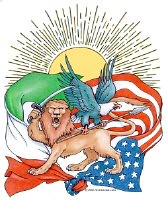
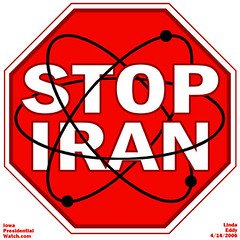

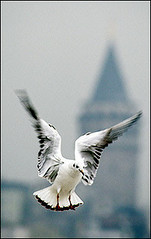



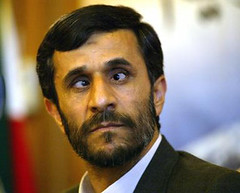

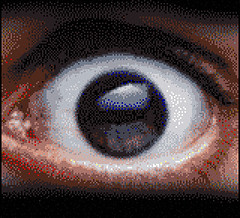

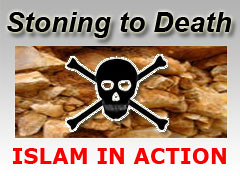

No comments:
Post a Comment